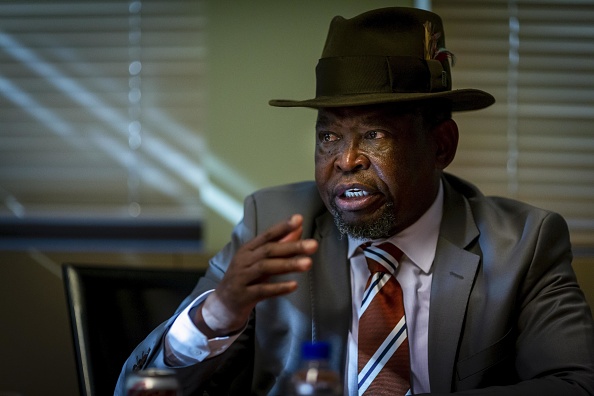

The government will draw R150 billion from the Gold and Foreign Exchange Contingency Reserve Account (GFECRA) to reduce public borrowing and bring debt-service costs to heel.
According to the budget tabled by Finance Minister Enoch Godongwana on Wednesday, the government will enter into a settlement with the South African Reserve Bank, allowing it to receive distributions of R100 billion in 2024/25, R25 billion in 2025/26 and R25 billion in 2026/27.
The budget document notes that the R150 billion withdrawal will reduce domestic market financing requirements, as well as the growth of debt stock and debt-service costs. This as the state endeavours to avoid a full-blown debt crisis. The treasury has projected that the state’s gross debt stock is expected to increase from R5.21 trillion in 2023/24 to R6.29 trillion in 2026/27.
The decision follows lobbying from civil society and labour, calling on the state to tap the account, which is managed by the Reserve Bank. According to the treasury, GFECRA had a balance of R507.3 billion in January 2024.
The budget document notes that the account is now larger than any plausible losses on foreign exchange reserves from rand appreciation — and that the fact that money hasn’t already been paid to the treasury is something of an anomaly.
In his speech on Wednesday, Godongwana noted: “Ultimately, we are bringing South Africa closer to our peers and ensuring alignment to international best practice.”
The government has also received warnings that the decision to draw from the account should not be taken lightly given its role in insulating the central bank from currency swings. In the event that the account endures losses from rand appreciation, the treasury would be obliged to cover these.
“Whatever we do, we need to have an adequate buffer to absorb any exchange rate swings,” treasury director general Duncan Pieterse explained.
“So, that is the one consideration. There has to be an amount of money left in the GFECRA account so that, should the currency strengthen significantly, that buffer is able to absorb that. If that buffer is not in place, then the national treasury will need to reimburse the Reserve Bank of whatever shortfall it has. So, we wanted to avoid that possibility.”
The settlement between the treasury and the Reserve Bank will endeavour to mitigate any risks to the central bank, while also reducing government borrowing.
This will be done through a three-bucket approach.
The first bucket will allow GFECRA to retain sufficient funds to absorb exchange rate swings. Once this arrangement has been fulfilled, funds will be distributed to the second bucket, ensuring the Reserve Bank’s solvency and to neutralise the interest rate impact.
Once the first two obligations have been settled, funds will be distributed to the treasury, according to the budget review.
Pieterse explained how the R150 billion was decided on: “Once you have ensured that you retain sufficient reserves to absorb any exchange rate swings — and you are able to ensure that the solvency of the Reserve Bank is not threatened or compromised in any way, then that effectively gives you an idea of how much you can conceivably withdraw.”
The budget further notes that the reform was developed in consultation with the Reserve Bank, as well as international experts.
Any GFECRA distributions “should be governed by a framework that rules out ad hoc decisions; should be public to ensure transparency and should be used to reduce government borrowing”, the document adds.
The decision follows pressure from civil society and labour — as well as warnings that the treasury risks leaving the Reserve Bank in a precarious position





